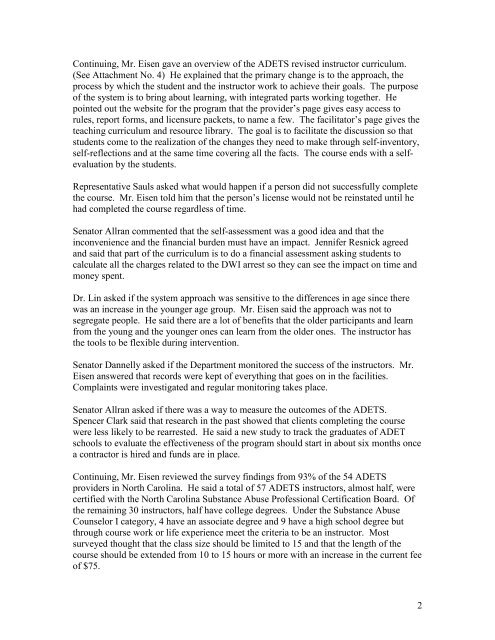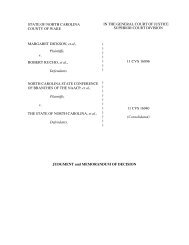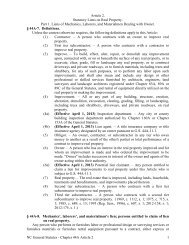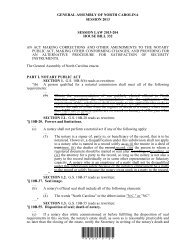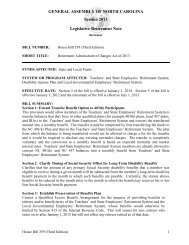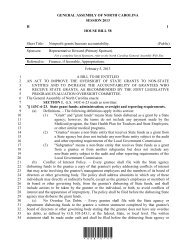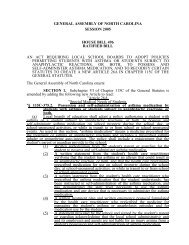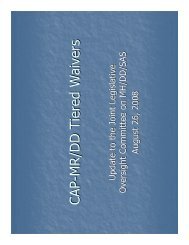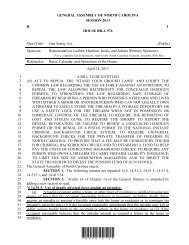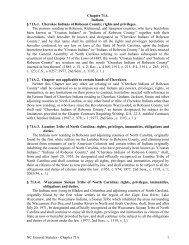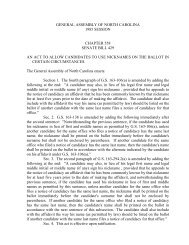MINUTES DWI/ADET ADVISORY COMMITTEE TO THE JOINT ...
MINUTES DWI/ADET ADVISORY COMMITTEE TO THE JOINT ...
MINUTES DWI/ADET ADVISORY COMMITTEE TO THE JOINT ...
You also want an ePaper? Increase the reach of your titles
YUMPU automatically turns print PDFs into web optimized ePapers that Google loves.
Continuing, Mr. Eisen gave an overview of the <strong>ADET</strong>S revised instructor curriculum.<br />
(See Attachment No. 4) He explained that the primary change is to the approach, the<br />
process by which the student and the instructor work to achieve their goals. The purpose<br />
of the system is to bring about learning, with integrated parts working together. He<br />
pointed out the website for the program that the provider’s page gives easy access to<br />
rules, report forms, and licensure packets, to name a few. The facilitator’s page gives the<br />
teaching curriculum and resource library. The goal is to facilitate the discussion so that<br />
students come to the realization of the changes they need to make through self-inventory,<br />
self-reflections and at the same time covering all the facts. The course ends with a selfevaluation<br />
by the students.<br />
Representative Sauls asked what would happen if a person did not successfully complete<br />
the course. Mr. Eisen told him that the person’s license would not be reinstated until he<br />
had completed the course regardless of time.<br />
Senator Allran commented that the self-assessment was a good idea and that the<br />
inconvenience and the financial burden must have an impact. Jennifer Resnick agreed<br />
and said that part of the curriculum is to do a financial assessment asking students to<br />
calculate all the charges related to the <strong>DWI</strong> arrest so they can see the impact on time and<br />
money spent.<br />
Dr. Lin asked if the system approach was sensitive to the differences in age since there<br />
was an increase in the younger age group. Mr. Eisen said the approach was not to<br />
segregate people. He said there are a lot of benefits that the older participants and learn<br />
from the young and the younger ones can learn from the older ones. The instructor has<br />
the tools to be flexible during intervention.<br />
Senator Dannelly asked if the Department monitored the success of the instructors. Mr.<br />
Eisen answered that records were kept of everything that goes on in the facilities.<br />
Complaints were investigated and regular monitoring takes place.<br />
Senator Allran asked if there was a way to measure the outcomes of the <strong>ADET</strong>S.<br />
Spencer Clark said that research in the past showed that clients completing the course<br />
were less likely to be rearrested. He said a new study to track the graduates of <strong>ADET</strong><br />
schools to evaluate the effectiveness of the program should start in about six months once<br />
a contractor is hired and funds are in place.<br />
Continuing, Mr. Eisen reviewed the survey findings from 93% of the 54 <strong>ADET</strong>S<br />
providers in North Carolina. He said a total of 57 <strong>ADET</strong>S instructors, almost half, were<br />
certified with the North Carolina Substance Abuse Professional Certification Board. Of<br />
the remaining 30 instructors, half have college degrees. Under the Substance Abuse<br />
Counselor I category, 4 have an associate degree and 9 have a high school degree but<br />
through course work or life experience meet the criteria to be an instructor. Most<br />
surveyed thought that the class size should be limited to 15 and that the length of the<br />
course should be extended from 10 to 15 hours or more with an increase in the current fee<br />
of $75.<br />
2


